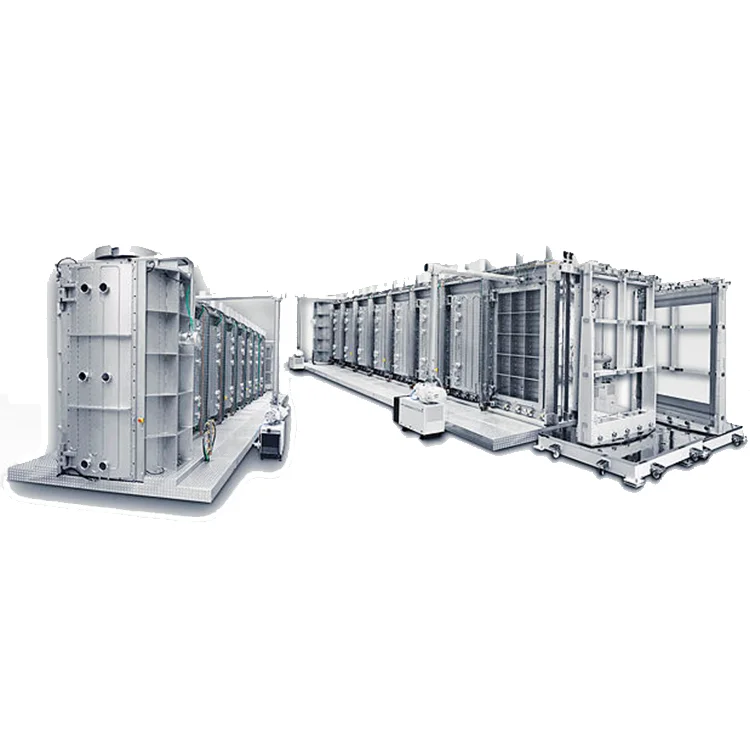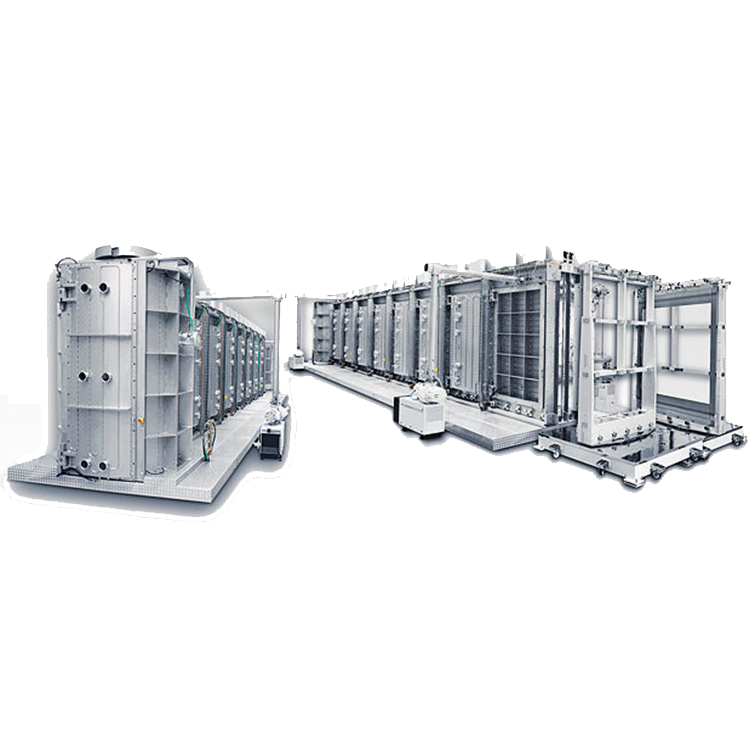ITO Glass Magnetron Sputtering Coating Line

ITO conductive glass coating equipment adopts vacuum magnetron sputtering technology and unbalanced magnetron sputtering technology to coat high quality float glass with SO2/ITO layer. Based on international advanced control system. The whole manufacturing process works automatically and continuously. ITO (Indium Tin Oxide) vacuum coating line, which is an advanced coating process and widely used in LCD, OLED, touch screen and other flat panel display devices. Magnetron sputtering coating technology is a physical vapor deposition (PVD) method. Its basic principle is to use the plasma formed by argon and other working gases to bombard the target (indium tin oxide target) in the vacuum chamber, so that the atoms of the target fall off from the solid surface through momentum transfer and deposit on the substrate to form a film. This process can not only operate at lower temperatures, but also produce dense films with high adhesion.
Main technical parameter
1. Vacuum chamber is made of stainless steel, vertical structure and the out wall connects with cooling water, inner wall with stainless steel block.
2. Vacuum system: Both of diffusion pump system and turbo molecular pump system are available.
3. Evaporation source: DC magnetron sputtering target, unbalanced magnetron sputtering target are respectively fixed on both sides of the vacuum chamber.
4. Workpiece drying system: The sputtering line adopts stainless tubular heater and vapor chamber to assure the heating homogeneity of the glass.
5. Air inflating system: mass-flow gas meter and automatic pressure controller.
6. Electrical control system: touch-screen and PLC automatic control to realize data display, operation and control by human-machine conversation system.
7. Water cooling system: vacuum cooling and cathode cooling system with water pressure protection switch and water flow switch.
Main technical parameter:
Ultimate vacuum pressure: 7X10-4pa
Average production cycle: 100 second/set
Total power: 350kw
ITO glass inline sputtering system is capable to apply different coatings on substrates. We provide design and complete set of machines according to the customers’ requirements, we can also provide the technical support for recipes and TURNKEY project service.
Material of the vacuum chamber of Continuous ITO Glass Sputtering Line is SUS304, the interior wall is polished. And the exterior wall is sprayed beads after polishing.
Transmission of vacuum chamber is done by the magnetic solenoid to ensure the stability of transmission. Speed for each section of the whole production line is driven by variable frequency motor, the speed is adjustable.
Controlling system of Continuous ITO Glass Sputtering Line: Touched screen and PLC automatic control
Application: glass panels of mobile phones, electronics, home appliances and displays
Technical features
High deposition rate: due to the use of magnetron electrodes, a very large target bombardment ion current can be obtained, so the sputtering etching rate of the target surface and the film deposition rate on the substrate surface are very high.
High power efficiency: the collision probability between low-energy electrons and gas atoms is high, and the gas ionization rate is greatly increased. Accordingly, the impedance of the discharge gas (or plasma) is greatly reduced, and the sputtering efficiency and deposition rate are significantly improved.
Low energy sputtering: The cathode voltage applied on the target is low, and the plasma is bound in the space near the cathode by the magnetic field, which inhibits the incidence of high-energy charged particles to one side of the substrate, so the damage to the substrate such as semiconductor devices is low.
Low substrate temperature: under the condition of magnetron sputtering, the electron concentration bombarding the surface of the substrate is far lower than that in the ordinary two-stage sputtering, which avoids the excessive rise of the substrate temperature.
Good uniformity for the thin layer: the working parameters have a large dynamic adjustment range, the deposition rate and thickness of the coating are easy to control, and there is no design restriction on the geometric shape of the magnetron target, thus ensuring the uniformity of the coating.

